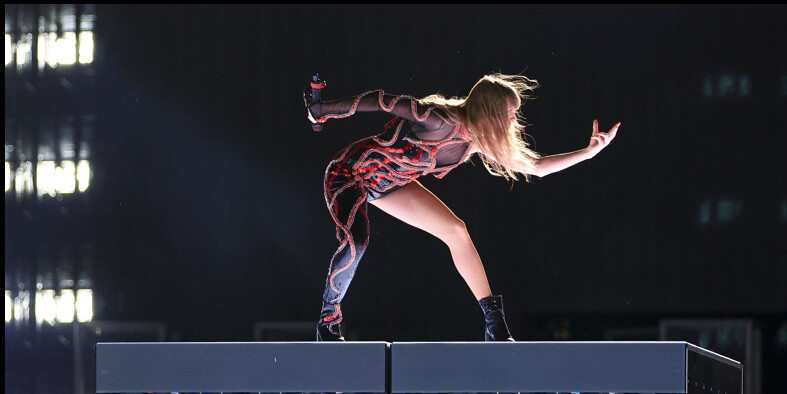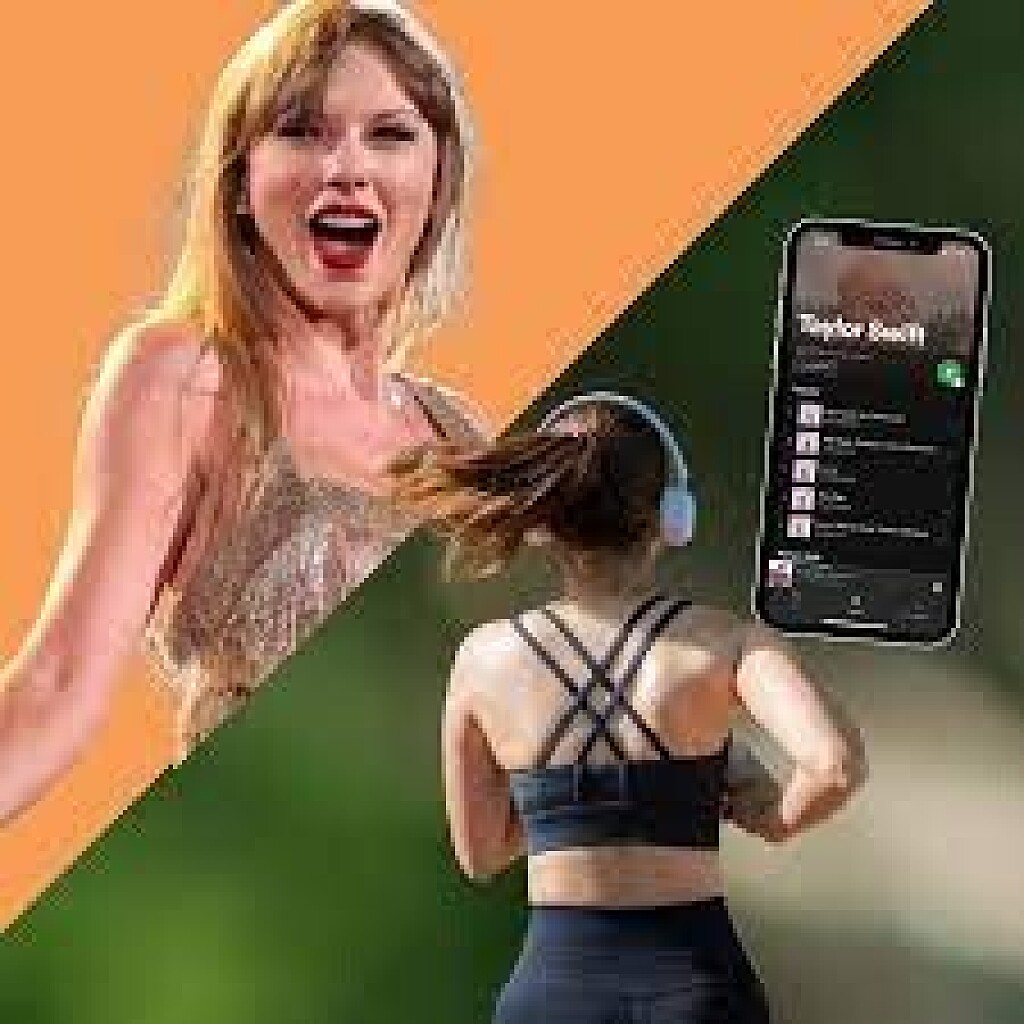Running News Daily
Running News Daily is edited by Bob Anderson. Send your news items to bob@mybestruns.com Advertising opportunities available. Train the Kenyan Way at KATA Kenya and Portugal owned and operated by Bob Anderson. Be sure to catch our movie A Long Run the movie KATA Running Camps and KATA Potato Farms - 31 now open in Kenya! https://kata.ke/
Index to Daily Posts · Sign Up For Updates · Run The World Feed
How You Can Incorporate Taylor Swift’s Workout Into Your Own Running
Like Taylor, I run when I sing—and you should, too.
I never knew it, but Taylor Swift is my workout doppelgänger. Like Taylor, I’m a singer (mezzo soprano in my chorus), and I run and lift weights.

So I was excited to learn that, like me, Taylor sings when she runs. In fact, music is my fuel, and all of my neighbors have heard me sing on my runs. I have no shame (and a pretty good voice).
When she was named Person of the Year, Taylor told Time magazine that to prepare for her Eras tour she ran on a treadmill while singing her three-plus hour set list. The internet—and runners and their coaches—had thoughts.
“It was a great idea for her to pair running and singing to build her endurance for the Eras tour,” Julie Sapper, a Level 2 RRCA-certified coach and cofounder with Lisa Levin of Run Farther & Faster in Hamilton, New Jersey tells Runner’s World. “I hope she took walks and hydration breaks, though, because without them, three hours on a treadmill could cause injury.”
While we don’t know the exact details of Taylor’s run and strength training workouts, which she did at The Dogpound, a very exclusive gym with NYC and L.A. locations, we do know that all of us can adapt some of Taylor’s habits to our own training. Including—that’s right—singing.
Sing more to help you run better
If you’ve ever run with a friend and tried to hold a conversation for more than a few minutes, but ended up huffing and puffing, then you have used the “talk test” to help determine the intensity of your run. Essentially, if you can talk while you run then you’re running “easy,” but if you can’t talk and need to catch your breath, you’re running “hard.” These metrics, though, don’t tell you anything about pace or time, which makes some runners doubt the validity of the test.
This also relates to running and singing. “If you are running at the right intensity, you should be able to sing without pausing for breath,” Alethia Mongerie, also known as Coach Mekela, a Level 2 RRCA-certified coach in Robbinsville, New Jersey, tells Runner’s World. “You should be able to complete a verse or sentence without halting.”
In fact, singing may even be better than talking to determine your intensity while you run because the lyrics and melody need to come out smoothly and without gulps of air. In order to do this, you need to take deep breaths, then let the air out in a continuous exhale so that when you start the phrase,“And it’s new, the shape of your body…” you can get to “It’s a cruel summer/With you” without losing your breath or rushing the words.
Mongerie suggests pairing your singing with zone 2 running. There are five running “zones,” all of which are based on your heart rate. Zone 2 is essentially 60 to 70 percent of your maximum heart rate and should feel like a light effort. “If you can run and sing in zone 2, you are doing it right,” Mongerie says.
Taylor Swift mentioned she used her set list to determine her treadmill pace, often walking during slow songs and speeding up to running during the fast tunes. Consider this another way to incorporate a Fartlek run into your treadmill workouts, which can boost the fun as you surge and slow down at different points throughout your run. Plus, put Taylor on the playlist and you know all too well the range of emotions that’ll help push you through each of those intervals.
Add strength and conditioning workouts, like Taylor’s, to your schedule
While she gave no specifics, Taylor also did what she called “strength and conditioning work” before her tour. “Strength and conditioning are very different and are both important,” explains Sapper. Strength work is lifting heavy with appropriate rest in between sets, while the purpose of conditioning is to work with no (or very little) rest at lighter loads to maintain a higher heart rate.
Here are two examples:
Strength: 3 to 4 sets of 4 to 6 squats with a heavy weight where the last rep feels super hard, and with 3 to 5 minutes of rest in between sets
Conditioning: 5 sets of jumping rope for 30 to 45 seconds, followed by 10 push-ups with no breaks between exercises or sets
Both sequences strengthen your legs, while the second also offers cardio benefits, and it’s important to add both types of training to your workout schedule.
Of course, anyone can see that it’s not just Taylor Swift’s legs that are strong. She holds an eight-pound guitar during part of the show and while, yes, she uses a strap, it’s still an added weight to her upper body. A strong upper body has been shown to improve running economy, too, according to a systemic review with meta-analysis published in a 2021 issue of Sports Medicine. So it’s smart to get your arms in on the action during strength workouts, too.
Recover right (just maybe don’t stay in bed all day)
There is one significant difference between Taylor’s training and performance and that of most runners, and it doesn’t only come down to our paychecks. Taylor hits one city and performs a few days in a row while the rest of us should leave more time for rest and recovery between our workouts, Sapper says.
In fact, in her Time interview, Taylor said she takes to her (hotel) bed for a full day of rest after a stretch of shows. “My daughter, a Swiftie, and I actually discussed this after she saw the show,” Sapper says, “How does she have the stamina to do one concert, much less a few in a row? Unlike athletes, she’s not periodizing her training. The key has to be her recovery and that’s true for any athlete.”
According to the National Academy of Sports Medicine, periodization comprises training phases and cycles to reach strength and performance goals. Taylor, though, is doing essentially the same show on most nights for months. That’s exhausting both physically and mentally. To recover, she told Time, she lies in bed for a day, resting her entire body, including her voice.
Most of us can’t—and probably shouldn’t—do that because active recovery leads to better results. Active recovery means walking, getting a massage, or doing other light activities to keep your muscles moving without straining them.
Create your own playlist for improved performance
All of us are impressed by the musicians—Taylor (now 34), Bruce (72!), and Beyonce (42)— who put on two- to three-hour shows, but we aren’t surprised. That’s because music can lessen the perceived effort of running.
In fact, according to a 2021 study published in the Journal of Functional Morphology and Kinesiology, listening to music improves performance in endurance, sprints, and resistance exercise, but it’s important to listen to music you like, not just the music piped into a gym. In fact, if you don’t like the playlist, you might even be discouraged from exercise.
So even if you aren’t a Taylor fan, turn up the volume on a playlist you like (or find one from the Runner’s World archives) and start your stride. You might not reach pop star status, but the beats will keep you running toward your goals.
by Runner’s World
Login to leave a comment




